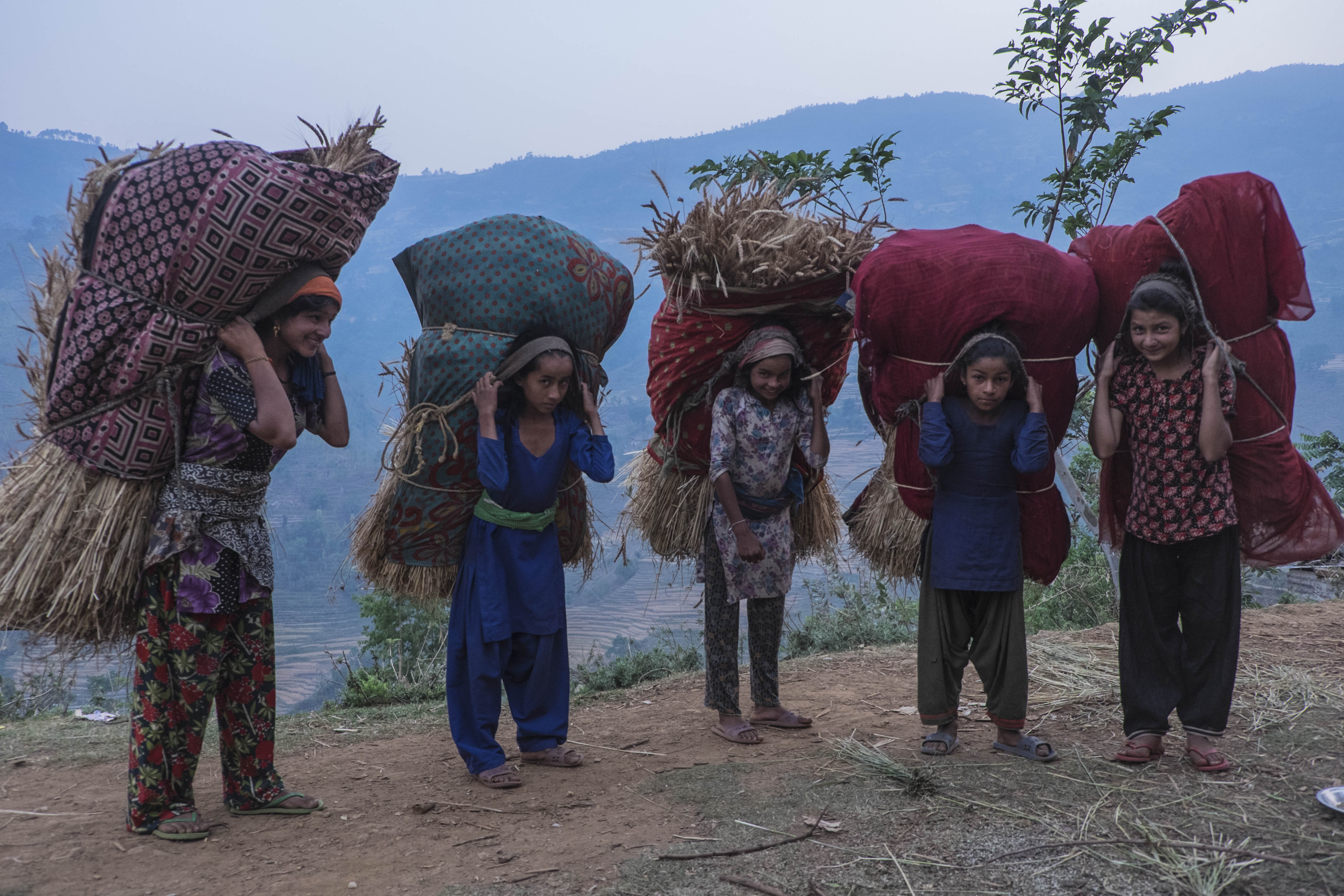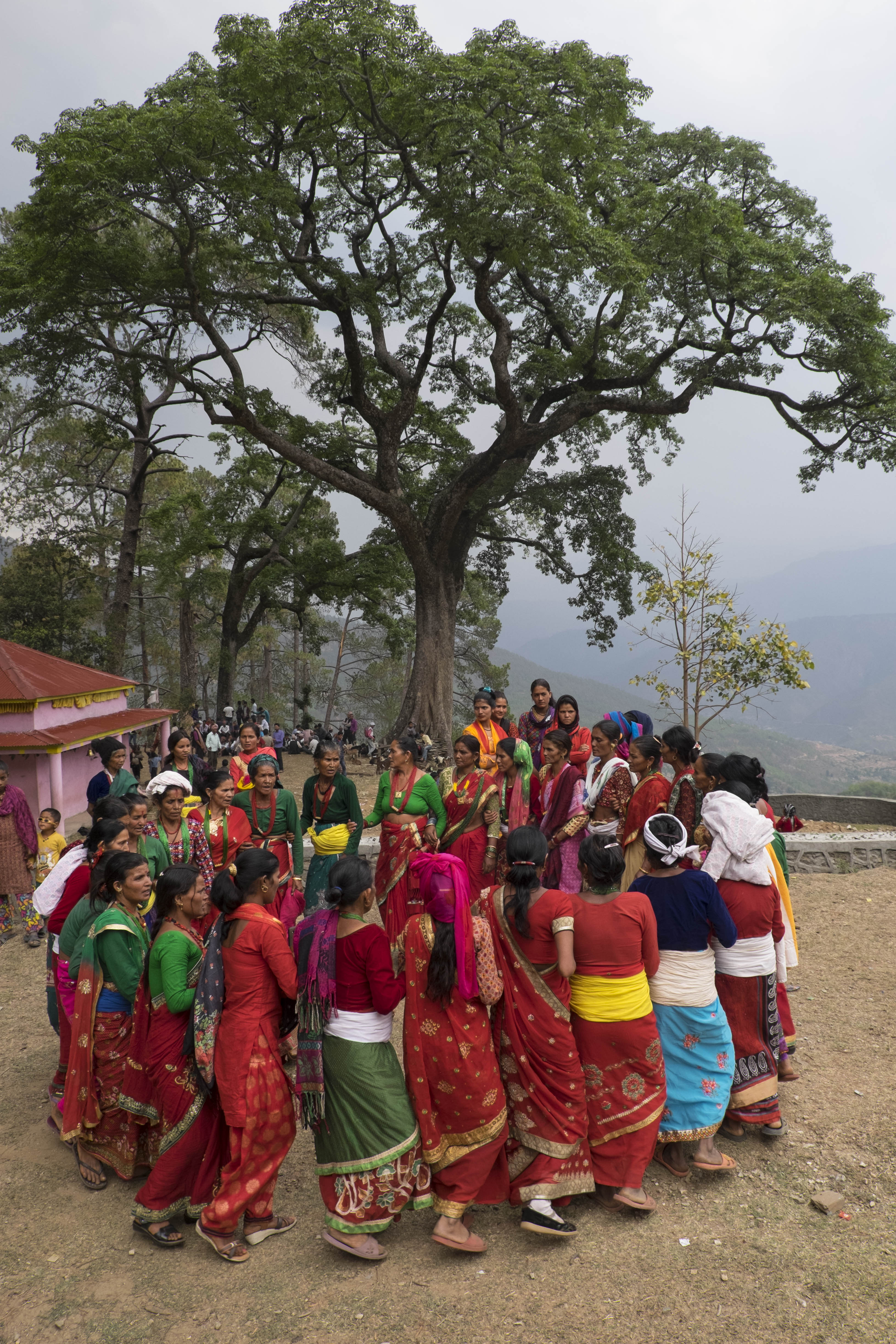One day, in the Facebook of the university where I am studying a degree in Cultural and Social Anthropology, I read a note where it said that they were looking for anthropologist volunteers for a project in Nepal. This name, Nepal, caught my attention; a country that I really like, that I have visited seven times and where, from my first landing in Kathmandu, not having yet gotten out from the airport, I felt like arriving to some familiar place. I was in a moment in my life when I could afford to take some months off and therefore I sent my application to the NGO.
I spoke with Bea via Skype, who explained the project and the cultural practice, the Chhaupadi, the reason for the intervention of the NGO in the community; custom which, despite my trips to Nepal, I ignored was being applied in such a strong manner.
Once selected, they explained to me my role as anthropologist: “to find a strategy to involve the shamans and men in the process of raising the level of awareness that was expected to be achieved with the intervention”.
Yeah, yeah, easy (of course this is ironical, especially for an anthropologist in training), but I liked it, because it showed the full all levels approach of the NGO.
I had never collaborated with an NGO, I have always been a bit mistrustful; therefore, I made up a plan B (yes, because I am more of having a plan B, unlike Bea, wonderful person, member of be artsy, who focuses all her energies for plan A to go to term), deciding to take with me all my mountain gear to lose myself in the powerful and energetic Himalayas in case the project would not finally be to my liking…. Well, I did some trekking alright, but at the end of the project, because I really loved this latter.
The project tries to raise awareness in the people of the community about what the menstruation is, giving a sexual, menstrual and health workshop in schools, and offering the menstrual cup as an ecological and hygienic solution, bearing in mind that many women use rags or have on two, three pieces of underwear, instead of using pads.
This education is important, considering that in the school curriculum there isn’t yet a section treating those subjects. Reason why the Chhaupadi practice is so deep-rooted, because they don’t know what the menstruation is in its biological sense.
During my interviews, to the question “what is the menstruation?” the reply was Chhaupadi. That is, they make no difference between the biological process and the tradition, whose real origin is unknown but which is still being passed on from generation to generation by the elders. That superstition about women being impure is the only information teenage girls receive about what the menstruation is.

The workshops are addressed to children and teenagers, of both sexes, who in some years will become husbands, wives and parents, potential agents of change; whereas the oldest people, both men and women, together with the shamans, are not inclined to any change in what refers to this custom. This is just a reflection of the social structure: patriarchal, where the woman occupies a subordinated role and the elders hold a lot of power. This is a custom that has no benefits of any kind for the women nor grants any service, except to support the stratification of gender in the social fabric.
The focus is in teenagers and children, but at the same time includes the people who hold positions of power within the community: they are informed, but they are not let to be in full command.
That is another point I like, because letting them the leadership would mean changing the form but not the substance: power and recognition would still be granted to those who already have it, leaving women in the shadows, confirming an unequal structure of power.
The ones imparting the workshops are local girls who live in the community, concept that achieves what I have most liked of the project: be artsy is giving an opportunity to these girls, providing them with knowledge through some intensive training, paying them, and, above all, the most valuable of all: it gives them self-assurance, the chance to empower themselves and be independent. Not the negative and destructing power that society allocates to them, but the power to break the mental framework that makes them feel inferior and impure.
This is the thing that has moved me the most: to see how girls of between 16 and 18 years old have changed, after 50 days of being together.
Hiukala, the trainer in my group, is 18 years old, and, more than others, represents that quick and intense change. When I met her during the training she was so shy that when I asked her: “what’s your name?” she replied whispering her name and looking down; to speak in public, impossible.
To be honest I could not picture her giving workshops in front of dozens of teenagers and speaking with the shamans, but I was mistaken. Day after day, with much effort and determination, together with Kamala, Goma and Basanti, the other girls in the group, I saw how she was becoming stronger until being able to go to her village and say to her parents that, from that moment onwards, she would not accept to be thrown out during her menstruation days.

They became a symbol for the women in her own community and above all a reference, because every two months the trainers do a follow-up with the women and girls using the cup, both to monitor the correct use of the cup as well as its impact in what regards the Chhaupadi.
Here I introduce another point in favour of the project: by training girls from the community, they give them the necessary tools to pass on the knowledge, as well as favouring the development of a context of debate that in other case would not exist given the political (the subordination of the women), socio-cultural and financial environment, which has them all the time occupied with tasks concerning the housekeeping and family care. They build a joint space from where resistance and change can arise, but leaving the choice to the people in the community, who will activate the change if they really wish to and see it necessary.
One form of resistance that shows up these days is only by songs describing the sufferings that the Chhaupadi brings and pleading the gods to leave them free to remain at home.
Last, but not least, is the part of the participative photography.
The cultural diversity is not only notorious in the external, material and visible, but also in invisible aspects like emotions, some predominating more than others.

Talking about the menstruation prevails the embarrassment over the ease, so using pictures instead of talking, as an alternative way of communication, but equally efficient, women are invited to share their opinion and experience about the menstruation, method that highlights the sensitivity of the project.
This project has got effects not only exclusively on the people of the community, but also on the ones involved: my experience in the field has been very intense, especially from a human point of view.
Starting by the team of be artsy, all of them wonderful people, few, but who are worth a lot, who despite the many difficulties and unforeseen issues that creep up daily to bring forward the project with determination and commitment, as volunteers and for free.
Their work is characterized by the effort, the passion, the way of giving themselves to the cause, the trust in activism and social change, which, as I have mentioned before, is reflected in the quality of the project.
I was surprised by the transparency in the management and the care and attention to all people involved. All of these reasons that made that my plan B would not finally happen.
The intensity is also due to the precarious context, which requires good adaptation skills and even to be able to forget oneself, being the only person from Occident in remote locations where nobody speaks English.
No doubt this has been the most authentic experience of all my stays in Nepal: in a warm atmosphere, waiting for them to boil water to be able to drink, eating only dal bat and forgetting about the possibility of choosing something else, but being aware of how lucky you are because you can have that at least every day, having a shower in the open air inside an uncomfortable sac called petit-cot and sharing rooms, even sometimes the bed, with people and bugs. Upon my return I had to look up the word privacy in the dictionary: it had become an obsolete word during this stay.
They told me at the beginning that I was going to live like a Nepalese, but this was not possible, because my skin colour, together with the local hospitality, granted me always a privileged position, although my role would result uncomfortable to some villagers (men and shamans). I always enjoyed the biggest bed, the softest pillow, many times I did not have to wait in line for washing myself in the fountain, and any request I may voice aloud became matter and obligation for all the community.
Not forgetting that I had some little angels with me: Hiukala, Kamala, Goma and Basanti, trainers and mentors of be artsly who during my stay watched over me.
A truly unforgettable experience that strikes a cord in you: I travelled to know some villages and their cultural customs, and I ended up knowing myself much better.
Dhanyabad!
Written, and © photos, by Eleonora Bordogni, translated by Tere Salinero
West Nepal girls need this kind of program. And we need help to continue the project!
Paypal recurring donations:
Or if you feel like it, you can donate via bank transfer at: Banc Sabadell IBAN: ES23 0081 0900 8200 0430 1934 BIC: BSABESBB (your recurring donation will help us have a better planning of our budget to carry out the projects undertaken).
Or take a look to others ways to donate at http://beartsy.org/get-involved-with-rato-baltin/ or https://beartsy.org/become-an-associate/
Thank You! 🙂
